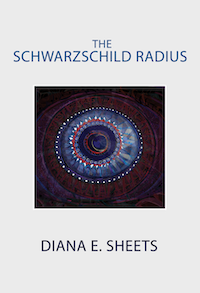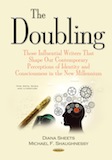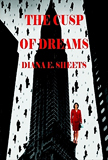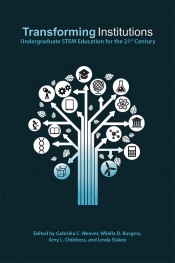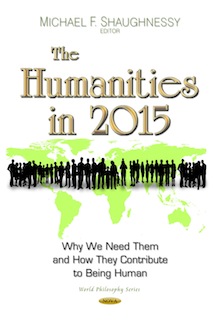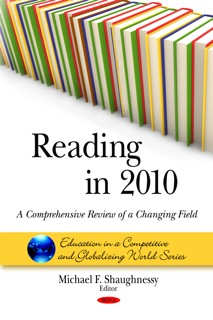Copyright © 2011 by Diana E. Sheets
Aside from the opportunity to feel the pulse, the rhythm, the dynamic energy of Manhattan in that short walk between Penn Station and the Javits Center, what can be said about America’s biggest publisher and bookseller tradeshow, the 2011 BookExpo America (BEA)?
TODAY’S CHANGING LANDSCAPE IN THE KINGDOM OF WORDS
Books are struggling to be relevant these days in the info-entertainment landscape. Selling today means having a book trailer (pitching the book as if it were a movie), blogging about the book regularly, and appearing on television and radio in an effort to engage viewers and listeners. Book reviews published in paper-bound newspapers, magazines, and journals are becoming Paleozoic. Instead, book bloggers post the PR release or review the book with hyperlinks back to the designated publisher or author website. These reviews are more likely to be distillations of the PR release or synopsis, not bona fide assessments of the book by professional critics. Then, of course, there are the video postings on Youtube, the photo sharing content available on Flickr, and those 140 character Tweets sent out daily—or hourly—coupled with frequent updates on Facebook and LinkedIn. The effort associated with this endless self-promotion soon dwarfs the time and energy expended in having created the book. Such is the banal, narcissistic bubble we live in today where few people actually read and fewer still are capable of immersing themselves in a book that creates a complex fictive universe.
Given that’s the reality today, what was noteworthy at the 2011 BEA? For Julie Bosman, “There is a Wild West quality to the book business these days, and it is on full display at BookExpo America....” (“E-Business Is the Buzz at Book Fair,” The New York Times, May 25, 2011, http://www.nytimes.com/2011/05/26/books/bookexpo-america-underlines-industry-shifts.html). While celebrity authors are sought by publishers to circumvent faltering book sales, nowadays even fame or notoriety doesn’t guarantee success. As actor and newly published author John Lithgow noted, his race to finish his memoir was motivated by the realization that “I’ve got to finish this fast. There aren’t going to be books anymore” (Boseman). While the book might not be totally dead yet, the transition from paper to eBook has been swift. Amazon announced that for every 105 books sold for the Kindle e-reader since April 1st, only 100 hardcover and paperback books were purchased and these figures included books that have no Kindle e-version and excluded free e-books. Jeff Bezos, Amazon’s chief executive, acknowledged the rapidity of the change when he noted, “We’ve been selling print books for 15 years and Kindle books for less than four years” (Claire Cain Miller & Julie Bosman, “E-Books Outsell Print Books at Amazon,” The New York Times, May 19, 2011, http://www.nytimes.com/2011/05/20/technology/20amazon.html).
Publishers Weekly, the trade source in the business of publishing, was hardly optimistic about the prospects for 2011. A recent assessment of bookstore sales by ABACUS suggested that in 2009 there was an 8.4% decline in bookstore sales by 61% of respondents. For the 39% who actually increased their purchases, their expenditures rose by only a modest 3.8%. Given the growth in e-book sales that are more likely to be purchased online and at a significantly reduced cost, bookstores are not expecting the figures for 2010 or 2011 to be better. Consequently, bookstores are focusing increasingly on merchandise—e-book readers, espresso machines, cards, T-shirts—whatever the market will bear and the public will buy (Judith Rosen, “Reimagine Everything: New Bookstore Concepts Abound at BEA 2011,” May 30, 2011, Publishers Weekly, Vol. 258, Iss. 22, p. 156, cited from ProQuest database). This trend is also evident at the 2011 BEA show where merchandise (especially reading glasses, magnifiers, and book lights), notable authors (Margaret Atwood, Jeffrey Eugenides, Erik Larson, Anne Enright, Charles Frazier), and celebrities (Mindy Kaling, Julianne Moore, Jane Fonda, Diane Keaton, John Lithgow, Michael Moore, Jim Lehrer, Jane Lynch, and Roger Ebert) now vie with programming associated with the Internet marketplace (the IDPF Digital Book Conference, the BlogWorld & New Media Expo NY, and the Book Blogger Convention). The hype, the marketing, and the merchandise threaten to overshadow the actual books on display at the publishers’ and booksellers’ booths.
In short, the business of promotion has displaced the Kingdom of Words. But here in the Literary Gulag literature counts, so let’s consider some of the highlights, those personal choices of this astute reader.
NONFICTION
■ Henry Kissinger, On China (The Penguin Press, May 17, 2011), http://us.penguingroup.com/nf/Book/BookDisplay/0,,9781101461822,00.html?On_China_Henry_Kissinger.
The relationship between China and the United States will in no small measure shape the course of the 21st century. To understand the historical forces in play requires a cultural understanding not only of our society, but also the Chinese narrative. It is imperative that we learn how ideas, events, and the Chinese worldview continue to be shaped by neo-Confucian principles and how these perspectives intersected with China’s Communist revolution and continue to be imbedded in the economic and social transformations following Mao’s rule. No one is more qualified than Kissinger to impart this story: his breadth of historical, political, and diplomatic experience with China’s leaders over some forty years gives this work heft and wisdom. A must read for our times.
■ Stephen Greenblatt, The Swerve: How the World Became Modern (Publisher: W.W. Norton & Company, to be released September 26, 2011), http://books.wwnorton.com/books/The-Swerve.
Greenblatt, the Cogan University Professor of English and American Literature and Language at Harvard, presents the story of cultural “swerve,” what we now refer to as the Renaissance. How might we trace its origins? These, he suggests, can be found in a Roman poem, “On the Nature of Things,” written by Lucretius. This epic makes an impassioned advocacy for a universe functioning independently of gods and religious fear while arguing that matter consists of tiny particles forever in motion and eternally colliding. This book, rediscovered some six hundred years ago, fueled the Renaissance, inspiring Sando Botticelli, Giordano Bruno, Galileo Galilei, as well as Sigmund Freud, Charles Darwin, and Albert Einstein, as well as Michel de Montaigne, William Shakespeare, and Thomas Jefferson.
■ Eric Enno Tamm, The Horse that Leaps Through Clouds: A Tale of Espionage, the Silk Road and the Rise of Modern China (Publisher: Counterpoint, published April 10, 2011), http://www.perseusacademic.com/book.php?isbn=9781582437347.
This is the story of Baron Carl Gustaf Mannerheim, Finland’s most lauded national hero. Mannerheim was celebrated because of his military sagacity in defeating the Bolshevik armies in 1918, thereby ushering in Finland’s independence and his military leadership in 1939 that ensured Finland’s successful resistance to Soviet efforts to render Finland a satellite state during the Second World War. Tamm’s book, however, chronicles Mannerheim’s two-year mission (1906-8) as a Russian spy in service to Tsar Nicholas II. Mannerheim’s 17,000 kilometer journey along the Silk Road to Beijing yielded strategic information about China’s military, economic, and political infrastructure along with 1,370 photographs and maps tracing more than 3,000 kilometers of his route. Tamm retraces the odyssey and augments the then and now with Google maps, photographs, and pictorial slideshows available on www.Horsethatleaps.com.
■ Timothy Snyder, Bloodlands: Europe Between Hitler and Stalin (Basic Books, October 12, 2010), http://www.perseusbooksgroup.com/basic/book_detail.jsp?isbn=0465002390.
How to explain the human carnage of some 14 million people who perished in Eastern Europe between 1933 and 1945? From Stalin’s liquidation of the kulaks to Hitler’s final solution, the river of blood that flowed through what we refer to today as Poland, Latvia, Lithuania, Estonia, Belarus, Ukraine, and Western Russia is examined by Yale historian Timothy Snyder in haunting, painstaking detail.
■ Frank Westerman, Engineers of the Soul: The Grandiose Propaganda of Stalin’s Russia translation by Sam Garrett (The Overlook Press, April 29, 2011), http://www.overlookpress.com/engineers-of-the-soul.html.
Westerman, a Dutch journalist, trained in engineering, worked as a correspondent in Russia for NRC Handelsblad (1997-2002). “Engineers of the Soul,” a phrase coined by Stalin, refers to those writers who contributed their efforts to the propaganda effort celebrating Soviet engineering feats—including the Belamor Canal and the salt works of Turkmenistan—that were meant to convey the glory of the communist dream. Westerman’s then and now journalistic coverage compares and contrasts the Soviet endeavor to glorify the “Soviet miracle” with respect to today’s surrealist farce of the former super power so deftly portrayed by Gary Shteyngart in Absurdistan. Along the way we are privy to the efforts of writers who lent their literary talents—notably Konstantin Paustovsky, Maxim Gorky, Andrei Platonov, Boris Pilnyak, and Isaac Babel—in praise of Socialist Realism. The reassessment of this era looks beyond the narrow confines of those celebrated dissident writers (notably Pasternak and Solzhenitsyn) whose writings were secretly circulated (samizdat) or smuggled to the West.
■ Ralph Peters, Lines of Fire: A Renegade Writes on Strategy, Intelligence, and Security (Stackpole Books, to be released September 1, 2011), http://www.stackpolebooks.com/productdetails.cfm?SKU=0588.
Since the conclusion of World War II, it seems as if the U.S. has been almost perpetually at war. In our present virtue-driven, feminized society, war is depicted as the ultimate evil. In order to understand the aims and motivations compelling America’s forces overseas, it is necessary to consider American policy from the perspective of strategic intelligence and the aims and motivations of the leaders guiding our Armed Forces. Ralph Peters, a former United States Army Lieutenant Colonel, has worked in military intelligence. He regularly writes for military journals, has been an Opinion columnist for the New York Post since 2002, and currently serves as a Strategic Analyst for Fox News. This book is a collection of articles and essays written in the 1990s and the post-millennial years and these perspectives—then and now—aren’t always in alignment. The world pre 9/11 seemed less menacing, less treacherous. Lines of Fire presents an opportunity for Americans to step inside the “mind think” of military intelligence and understand why it is we are at war today and what’s at stake.
FICTION
Literary fiction these days is so dreary, dreary. Consciousness à la James Joyce and Virginia Woolf with a mind-numbing postmodern meta quality continues to have a stranglehold. All those MFA programs churning out writers whose only “knowledge base” is the narcissistic interior journey of self devoid of real-world referents. Meanwhile the genres have grown noticeably more prosaic as audiences have migrated to the Web where the world of words has been subordinated to visual and audio stimulus.
But a writer can hardly attend the BEA without taking note of any fiction, so Literary Gulag will mention two books.
■ Jaimy Gordon’s Lord of Misrule (McPherson & Company, November 15, 2010), https://www.mcphersonco.com/cs.php?f[0]=shh&pdID=177).
Lord of Misrule was the 2010 National Book Award Winner. This novel is about the world of horse racing at the dung heap of the racing circuit, Indian Mound Downs. A suspenseful, character-driven story conveying multiple points of view, the story centers around Tommy Hansel’s efforts to revive the financial prospects of his stable by easy wins at long odds in a dusty, marginal racetrack situated in the Northern Panhandle. It’s a tale of life lived in the margins for both “man” and “beast.”
■ Josh Pryor, Fade to Black: A Novel (Red Hen Press to be released October 1, 2011), http://www.redhen.org/RedHenPress.html#/catalog/catalogView/type=books;bookUUID=70B43456-D752-60B9-3670-16CBA285CD10.
Fade to Black is a suspense thriller about a secret, government bio-weapons project at a remote research station in Antarctica, which has gone terribly awry. When scientist Alan Whitehurst mysteriously dies in an explosion, former colleague and friend Dr. Claire Matthews joins a team of military and civilians charged with investigating the calamity. At the heart of this drama is a microscopic organism S. iroquoisii that is associated with the evolution of Homo sapiens that may also be linked to the tragedy. Biology, suspense, forensic science—this is an action-packed, cinematic story.
In trolling the aisles of the BEA, discerning readers have to search hard for meaningful content. BOOK SELLING IS BUSINESS. Distinctive voices have been drowned out by banality. But a few houses deserve mention, even (gasp!) a comic book publisher.
OTHER NOTEWORTHY PUBLISHERS
■ Two Dollar Radio (http://www.twodollarradio.com) is a small, family-run publishing house in Columbus, Ohio. Adventurous and committed to edgy, youthful trends, the fiction backlist offered by this house defies the mind-numbing commercial trends and deserves our serious consideration. Here is a selective list of some of their offerings: Francis Levy, Seven Days in Rio; Joshua Mohr, Damascus; Trinie Dalton, Baby Geisha; Barbara Browning, I’m Trying to Reach You; Jay Neugeboren, You Are My Heart and Other Stories; Grace Krilanovich, The Orange Eats Creeps; Xiaoda Xiao, The Cave Man; Rudolph Wurlitzer, The Drop Edge of Yonder.
■ Gingko Press (http://www.gingkopress.com), located in Berkeley, California, is a specialty house focusing on graphic design, architecture, pop culture, graffiti, art, and photography. It’s the official publisher of Marshall McLuhan and will be reissuing The Medium is the Message: An Inventory of Effects with the original hardcover design first published in 1967 (to be released June 15, 2011). If you haven’t seen it, this book is a physical beauty, a reminder of those bygone days when books were the substance of our lives.
■ Dark Horse Comics (http://www.darkhorse.com), the third largest comic book publisher in the U.S., is located in Milwaukie, Oregon. It is now 25 years old. Not familiar with Dark Horse? Its list includes Star Wars, Buffy the Vampire Slayer, Hellboy, Hellsing, Trigun, as well as the comic book genres Manga and Horror. And let’s not forget Frank Miller’s Sin City, a neo-noir series situated in Basin City populated with criminals, thugs, and degenerates and saturated in violence. The movie adaptation, with its tabloid rich colorization and graphic violence (2005), was co-directed by Robert Rodriquez and Frank Miller and featured Quentin Tarantino as a special guest director.
CONCLUSION: THE STATE OF THE BOOK IN THE KINGDOM OF WORDS
But let’s conclude with some overarching perspectives on the book marketplace. Seismic changes are occurring in the industry. As Julie Bosman noted, “Authors are shrugging off publishers to self-publish their work. Publishers are advancing into retail. Barnes & Noble is getting deeper into the gadget business, and Amazon is stepping into publishing” (“E-Business Is the Buzz at Book Fair”). These changes are even more staggering than first appears. Self-publishing is now the norm in an industry where writers must demonstrate not their literary acumen but their marketing savvy to generate revenue to meet the bottom line. Amazon has hired Laurence J. Kirshbaum to create an imprint for Amazon that will be devoted to general-interest topics (Bosman). Not surprisingly, Amazon recently announced that it had acquired a book by Barry Eisler, a thriller writer, who decided to forego a half-million dollar agreement with St. Martin’s Press in favor of Amazon (Neal Pollack, “The Case for Self-Publishing,” The New York Times Book Review, May 20, 2011, http://www.nytimes.com/2011/05/22/books/review/the-case-for-self-publishing.html). Indeed just prior to the BEA, Amazon announced that it was launching the Audiobook Creation Exchange (ACX), an online audiobook marketplace to connect authors, agents, publishers, actors, and studios with the talent needed to publish audio books, as well as sell them through ACX’s digital distribution platform (“Audible Launches the Audiobook Creation Exchange (ACX), May 12, 2011, http://www.businesswire.com/news/home/20110512005432/en/Audible-Launches-Audiobook-Creation-Exchange-ACX). For the self-published author this provides an opportunity to create an audio version of his or her book through ACX, presumably at a very competitive cost while offering a distribution platform to reach interested audio book buyers.
Then there’s Google Books and, more recently, Google eBooks. The latter was launched on December 6, 2010. Google eBooks represents yet another eBook platform (Kindle, iBookstore, Nook) that will enable you to view your Google eBooks in a cloud even if purchased from other participating booksellers. Readers can potentially read these eBooks from a range of phone, tablet, computer, and electronic devices (Doi Anuttarangkul, “Google eBookstore,” English MBA 2011, MIS Class for English MBA at NIDA Business School, last edited December 15, 2010 and downloaded June 2, 2011, http://engmis.wikidot.com/google-ebookstore-by-doi). Since twenty percent of the Google eBooks are scanned into a searchable Google database, this vastly increases the likelihood that potential readers might discover a writer’s work thanks to Google’s optimized search engine.
Bottom Line: the globalized, self-publishing universe is here to stay and the traditional book publishers and booksellers are at a disadvantage with respect to technologically savvy Internet publishers, most notably Google and Amazon, who now will hold the keys to the Kingdom of Words. There is indeed, as Julie Bosman suggested, “a Wild West quality to the book business these days...” Welcome to the e-shoot-out at the virtual O.K. Corral.
Copyright 2018 Diana Sheets. All Rights Reserved.


